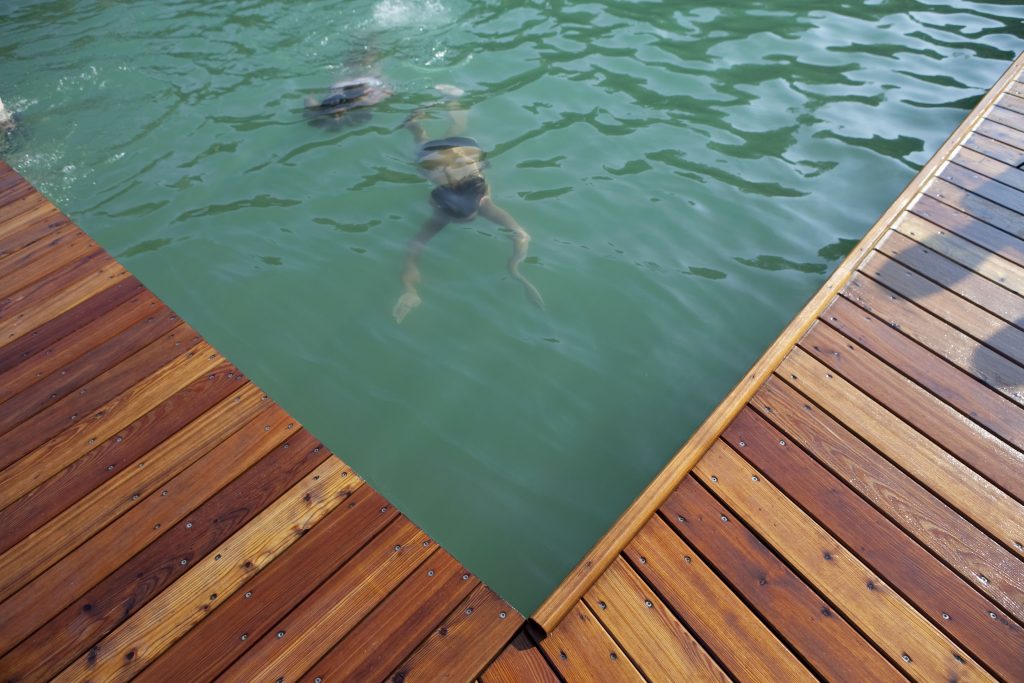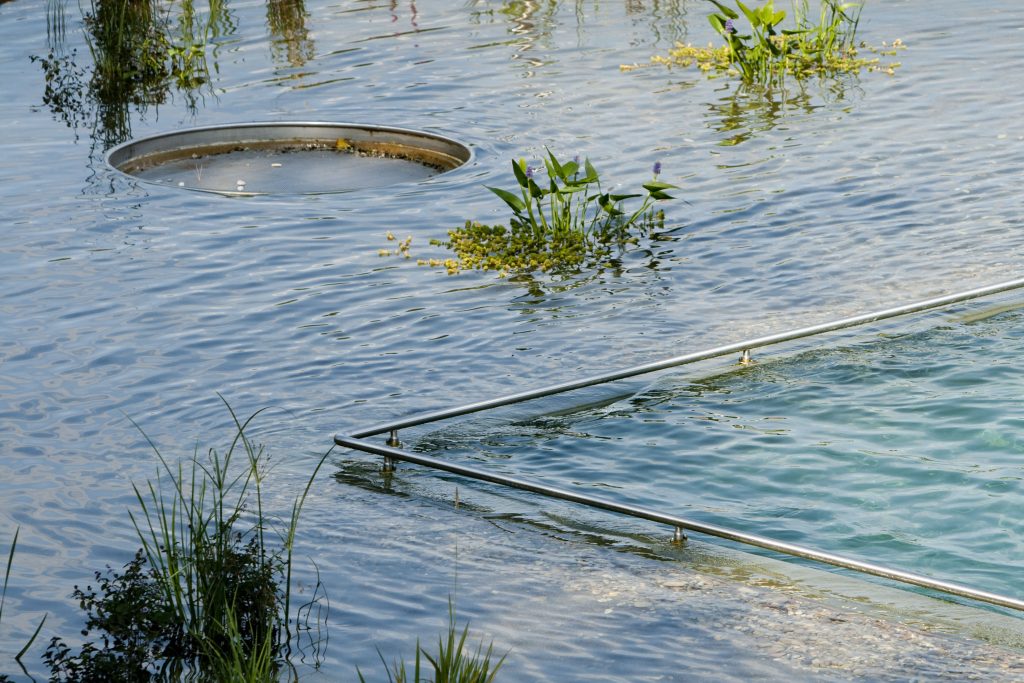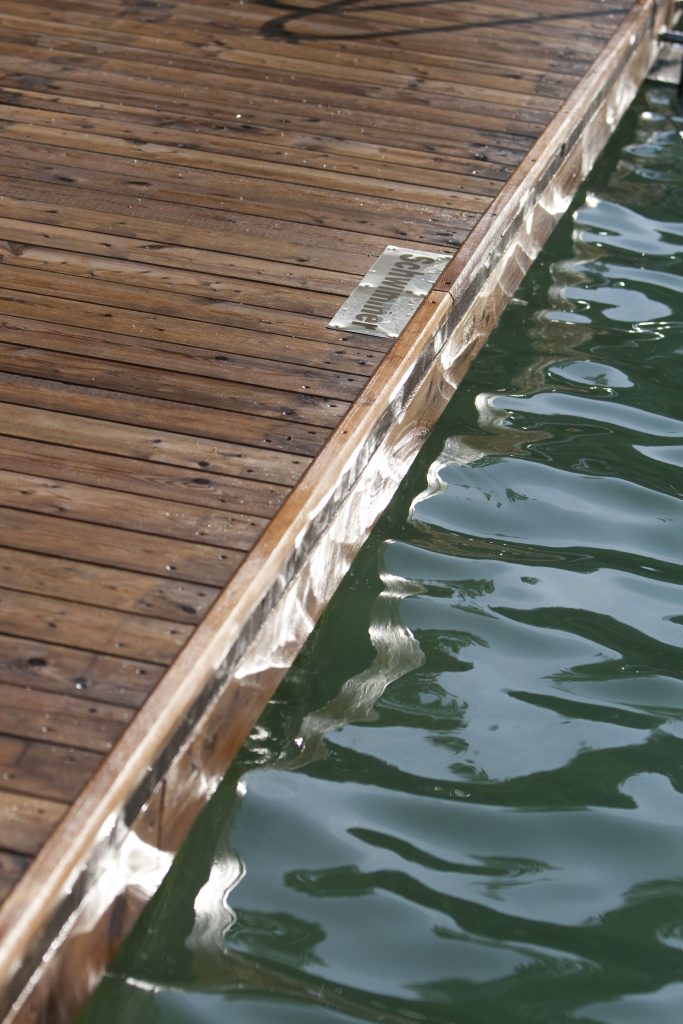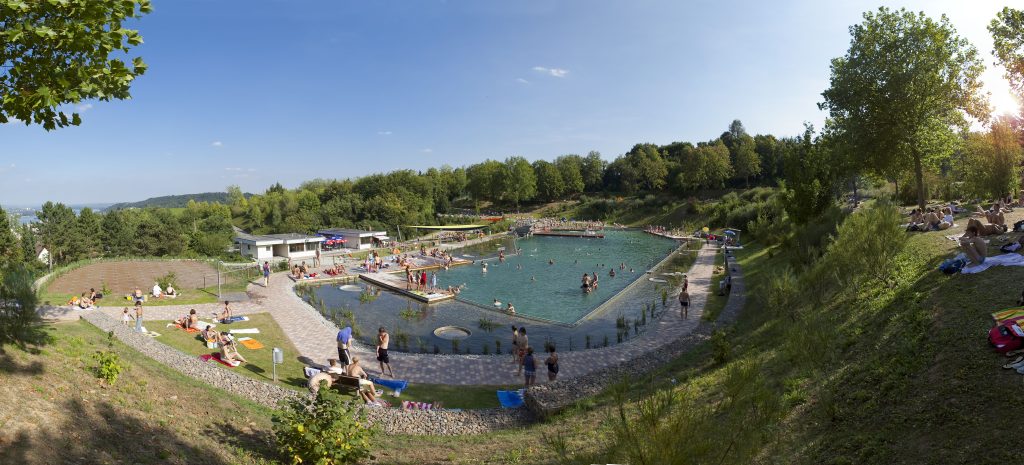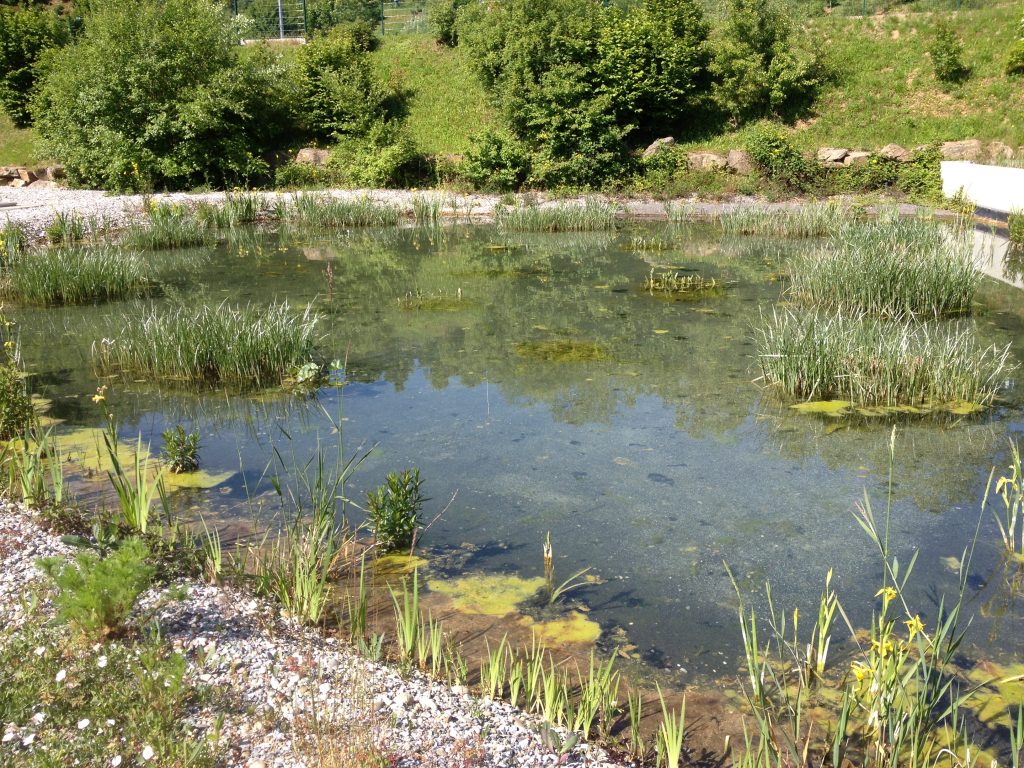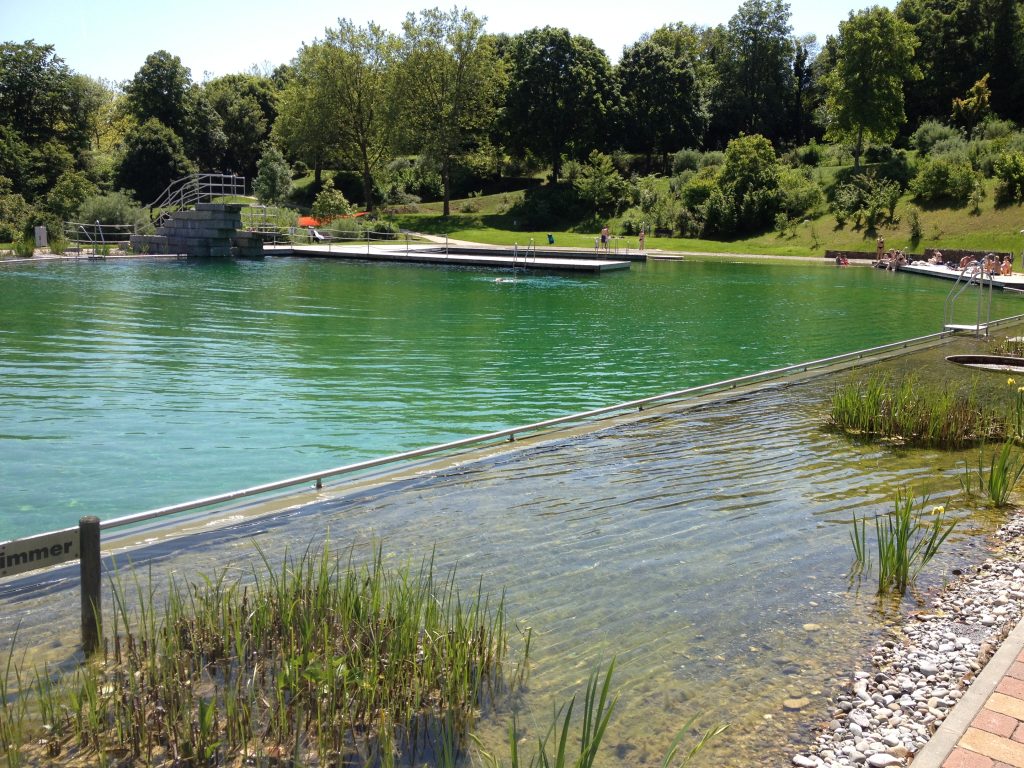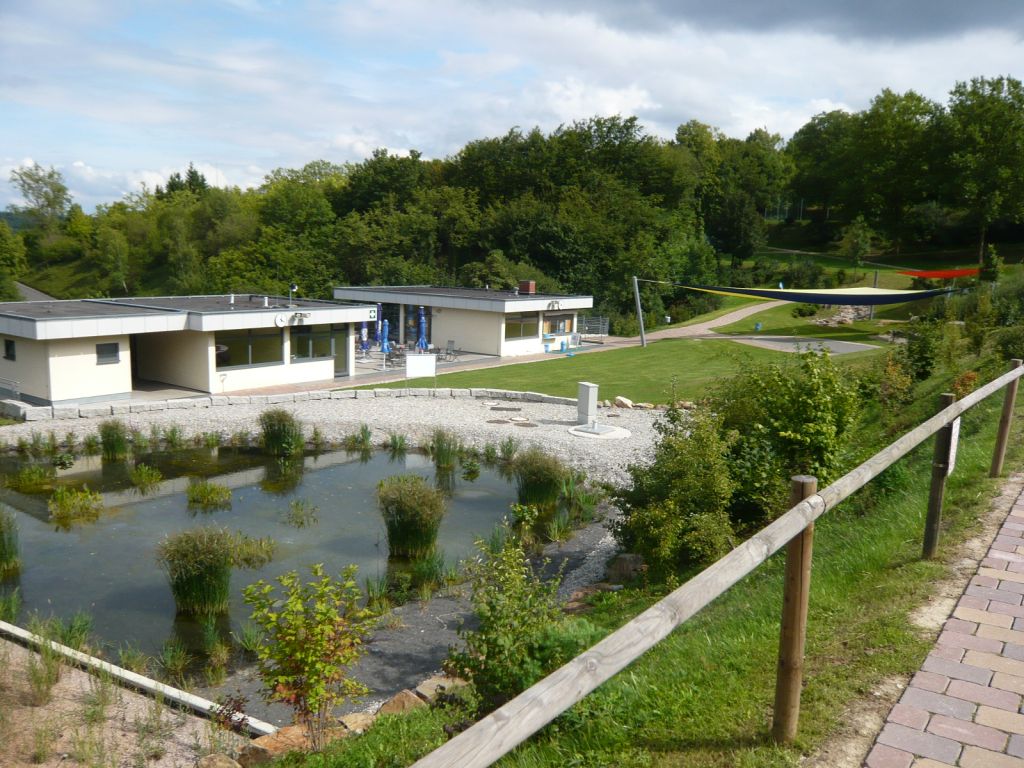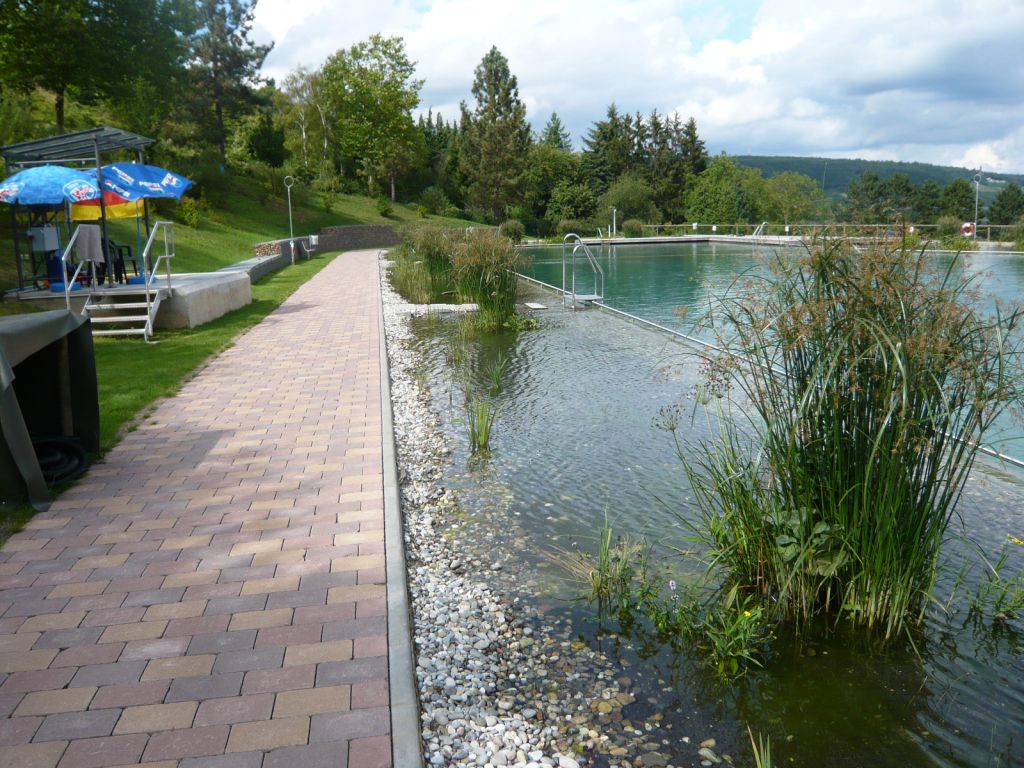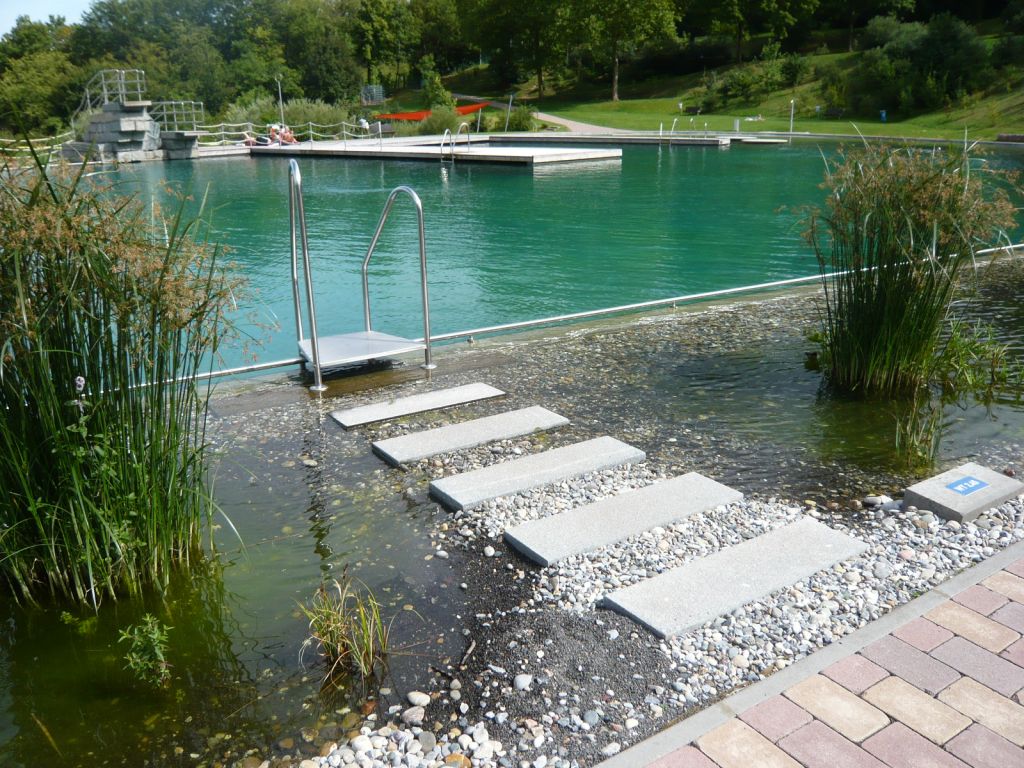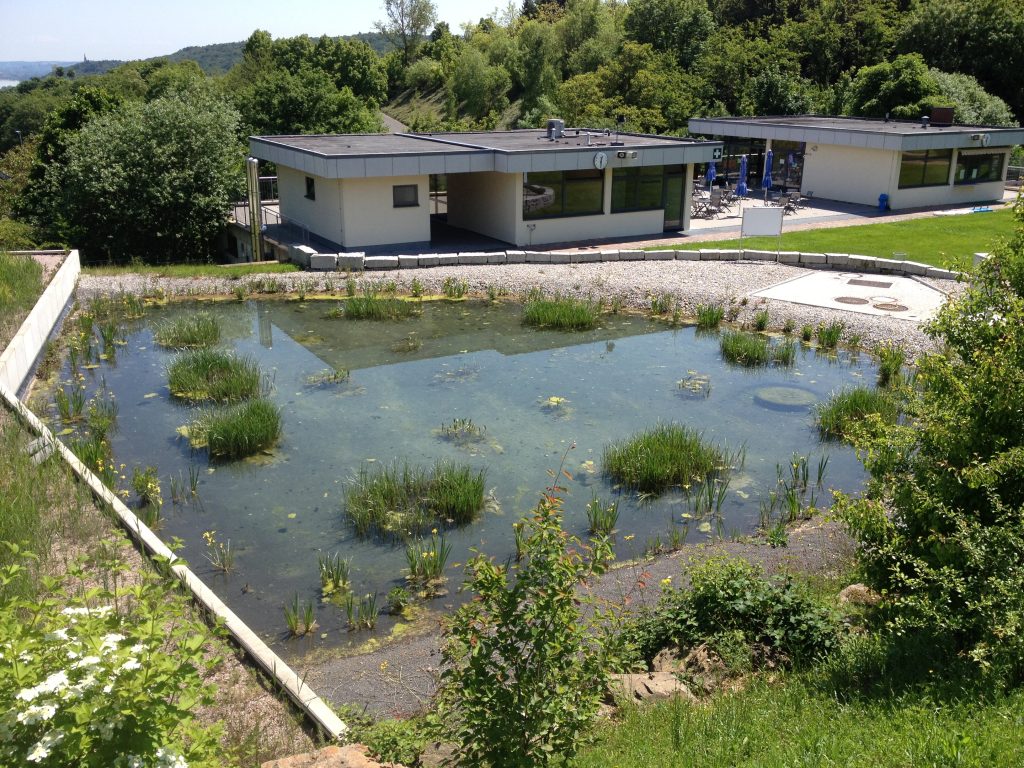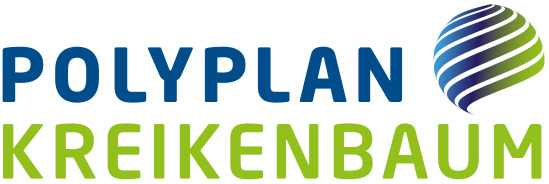Design concept
The Naturerlebnisbad Bingen-Bingerbrück with biological water treatment is located on a terraced site that slopes steeply down to the Rhine over several levels. The main entrance is located in the lower area, from which the bath is accessed through the existing entrance and functional building. From here, the bathers can reach the attractively designed open space with the toddler area located on the lowest level in the immediate vicinity of the sanitary facilities. Via the gradually ascending pathway, the visitor can reach the higher areas with combined swimmers’ and non-swimmers’ pools. The non-swimmer areas are now located on the south and north sides of the combi-pool. At the center of the pool are the extensive swimmer’s and the diving areas. The diving area has a natural rock structure used as a diving platform. Further west, there are other higher lying areas. From here the visitor can enjoy the view down to the Rhine valley with its extensive vineyard terraces.
Review
The outdoor swimming pool Bingen-Bingerbrück, which was built in 1969, was converted into a natural adventure pool for the first time in 2004/2005. The new bath enjoyed a great acceptance among the local population of the region. However, structural defects already appeared in the first years of operation. In particular, unevenness and leaks in the liner, as well as inadequate pool drainage and material spills from the gravel beach into the pools was noticed. In addition, injuries to bathers were increasingly recorded during operation, raising widespread safety concerns. The structural deficiencies were so massive that the city of Bingen decided to completely rebuild and renovate the bath. After just over a year of planning and construction, the Bingen-Bingerbrück natural swimming pool was reopened in the summer of 2009.
The biological water treatment
The design of the biological-mechanical water treatment was carried out according to the recommendations of the FLL. The combination of a sprinkled Neptune filter for peak load coverage, a bank filter, and an aquaculture system with a flooded bottom filter was selected. The aquaculture also serves as a surge tank and has varying water levels depending on the operating load and bath density. The pool hydraulics of a natural outdoor pool pose a particularly great challenge to the planner. The aim is to achieve uniform mixing to maintain the dilution rate, as in a basin bath. However, in a disinfected pool bath, the uniform distribution of the disinfectant is particularly important. In addition, in a natural outdoor pool, leaching losses of zooplankton during full-load operation must be minimized because zooplankton are an important component of “in situ biological disinfection” through selective filtration in the water body. In addition, in a natural outdoor pool, leaching losses of zooplankton during full-load operation must be minimized because zooplankton are an important component of “in situ biological disinfection” through selective filtration in the water body. This design allows for an uniform discharge along with an overflow channel, but leaves the zooplankton in the water body.
Characteristics
- Total water surface: 2,398 m²
- Total water volume: 4,500 m³
- Usable water surface: 1,800 m²
- Water treatment: Neptune filter (700 m²), submerged soil filter (600 m²), filling water treatment with PO4 adsorber
- Control: PLC, remote maintenance
- Nominal number of visitors: 1,886 bathers/day
- Annual visitors: 50,000 bathers / year
